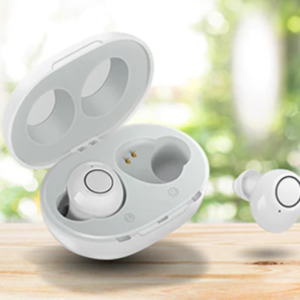Fresh basil is an integral part of mozzarella, tomato salad and Italian cuisine. People like to buy the fresh spice in a jar in order to enrich as many dishes as possible with the large, appetizing basil leaves. But the healing effects of basil can also be a reason to use it as a spice as often as possible, because the aromatic herb relieves flatulence, helps with digestive problems and can be helpful for easy drainage.
Seven tips will make your basil live longer
It is a pity, however, that basil rarely survives long in a pot. Usually a fungus attacks it, the leaf tips become dry or the whole plant dries up within the first two weeks. Anyone who cannot watch this tragedy harvests all the leaves prematurely and dries them for later use. However, the intensive aroma is quickly lost.
So that your newly purchased basil doesn’t have to be disposed of so quickly, here are all the tricks that will enable it to survive for months.
1. Thinning
After removing the plastic cover, the weak plants like to fold over to the edge. In order to prevent fungal growth from the start, you should immediately remove the small fallen leaves lying on the ground, any dark leaves and broken shoots. The herb pots are often planted far too close together, so that the plants take away the nutrients from each other in the long run. Thinning out is therefore advisable. With feeling, you can carefully pull out the stems that are too close together, together with the roots. When mucking out, give preference to the weaker and smaller plants and preferably put them in a new pot.
2. Check the ground conditions
Everything is already optimally available in the supplied pot, which is why it does not need to be moved or fertilized. However, if the soil ball is already covered with roots, it does not hurt to carefully divide the ball and plant the basil plants in two clay pots. The clay pot has the advantage that it can absorb and release water very quickly. When repotting, you should use loose, nutrient-rich and water-permeable soil to avoid waterlogging. A mixture with quartz sand is ideal for this. Maybe give him a nice cachepot, then the basil is not only useful in the kitchen, but also extremely decorative.
3. Location choice is crucial
Basil loves a bright and sunny place, also on the windowsill. Locations below 16 °C are generally unsuitable. If it gets really hot in summer, he’ll be happy if he only gets half a day of sunshine.
4. How to properly water your basil plant
To prevent the root ball from drying out, it is advisable to place the basil and its pot in a bowl half-filled with water once a day for about 20 minutes. This allows the roots and the soil to become saturated. This daily water intake is actually sufficient. On hot days or at a window seat that is heavily exposed to the sun, a quick refresher may be necessary in the evening. However, it would be better to avoid such extreme sunny places. Basil, like tomatoes, finds direct watering unpleasant and often reacts by stopping growth and the resulting fungal infestation.
5. Correct order of harvest
To keep the basil leaves from coming into contact with the moist soil, you should use the lower leaves that are in contact with the soil first and then cut off the top of the top row of leaves. The plant sprout with two new branches, becomes wider and more luxuriant. By cutting off the tip, the flowering and thus also the seed formation, which leads to death, is delayed. This top cutting may be necessary again after a longer period of growth.
6. Fertilize basil
After the basil has drawn a lot of nutrients from the soil after a few months, you can use some compost to increase the nitrogen content again and help it continue to grow lushly. Or just use this kitchen scraps for fertilizing.
7. Propagation of basil
Sometimes it makes sense to remove one or the other side branch so that the individual plants don’t crowd each other too much at the top. You can put this stalk in a glass of water. With daily water changes, roots will sprout after about a week, so you can put this offshoot in a new pot with permeable soil.
By autumn at the latest, it will be difficult to get the basil plant through the dark season. If you leave two or three herb plants with their tops and allow the buds to mature, you may be lucky enough to get new seeds for spring.





